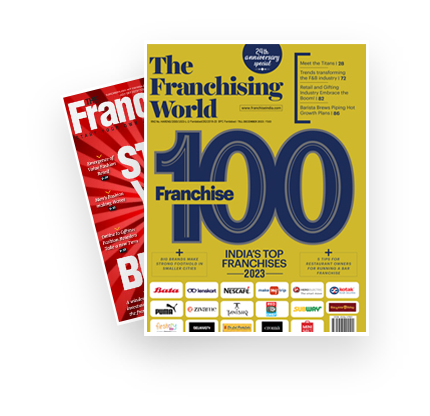
At no point in human history was the populace so aware of the economic consequences of a pandemic. Initially, the reaction to the COVID-19 outbreak ranged from sheer panic to brands scurrying to make what they could before the apparent and inevitable shutdown. India recorded a staggering 120 million regular online shoppers in 2018, and with a CAGR of 28 percent, the online shoppers are expected to reach over 200 million by 2025. But while the COVID-19 situation has turned out to be an unmitigated disaster for many businesses, hundreds of others have taken the consequences in their stride.
Industries were already establishing their presence online before the pandemic hit. Now, with a nearly 100 percent increase in online sales in India, businesses and entrepreneurs realize that the shift might be more formidable and long-term than they ever thought.
More and more people are shopping for everyday needs and luxury items online. From groceries to sanitizers and from clothes to washing machines, the need to physically visit a store to shop continues to fade. And, as the behavior of the consumer changes, with it, changes the traditional marketing trends. Considering that, here are the emerging trends that one can expect to see in digital marketing.
1. Integrated Approach:
Digital marketing cannot work in isolation. Experts are suggesting the rise of integrated marketing where brands are aware of the changing needs and behavior of the consumers. Marketers would need to understand the customer at every step while making use of custom tools, data, and tech to stay ahead in the game.
Consider the traditional brand funnel structure that has been used to trace the behavior of a client. The structure begins tracking from the moment the consumer realizes the need for a product and begins his search for it to the moment when he actually makes the purchase. When it comes to a digital market, such trends become outdated. The consumer in this case might not even be aware of a product while surfing the internet. Carefully placed ads on social media or related searches on e-commerce sites are then used to pique their interest. Online reviews and specifications are other vital aspects that drive customer interest and ultimate purchase.
2. ROI:
As we have witnessed the massive shift in the market due to the huge number of online shoppers would obviously mean that brands would have to increase their investments in growing their brand name and marketing their products online. All the high ROI generating tools and digital channels, including SEO, programmatic advertising, and conversational marketing, are going to witness incredible growth in investments during and post-pandemic.
3. Digital marketing as a Profession:
The sudden demand and growth of the process called ‘online shopping’ led the entrepreneurs and business owners to rethink and re-design their traditional way to offer products and services. They are now investing to grow their virtual reach through digitalizing their business models. In 2017, a study claimed that the need for digital marketers was at 56%. And, those who are able to meet the demands of the market through traditional ways were a mere 24%. These researches lead to the creation of a newer, savvier batch of digital marketing professionals. Many people will see it as an opportunity in the changing needs of the digital market and move to take it up as a profession and the competition will surely be more aggressive in the near future.
4. Work Being Outsourced:
The untapped talent of youthful entrepreneurs in digital optimization cannot go unnoticed. Indian entrepreneurs and digital marketers are likely to see an influx of requests from brands all over the world as they make their journey into virtual terrains. It’s a moment of reckoning, one that digital marketers and developers in India are more than ready to embrace.
5. Related Streams Witnessing Improvements In
Nowadays, most of the supply chains aren’t merely set up to deliver this sort of demand for speed and convenience in a cost-effective way and are already creaking under the strain of the new multichannel world. The modern world will witness the changing and somewhat erratic behavior of the ‘new’ consumer in the transition from traditional brand funnels to trends and terrains that many brands are unfamiliar with. While creating a smooth yet glorious experience for ‘customers’, the professional website developers would need to be acknowledged for the advancement ahead. This will set the brands apart from their competitors in terms of performance and the way they deliver the product and services to their customers.
6. Small and Medium Brands to Group Together:
As brands transform digitally for a virtual future, many businesses would need to consider symbiotic relationships where they group together with other brands in order to enhance their procedures. This would lead to higher benefits, especially for small and medium businesses facing higher demands that they aren’t ready to deliver yet. A lot more money can be invested in marketing while working together and sharing costs. Building into a larger entity would also mean being able to access a broader consumer base with specialized needs that a small or medium brand might not be able to meet alone.
Conclusion:
COVID-19 has made us aware and familiar with online shopping. Now we realize the sheer benefits of being able to order everything from a book to a water purifier from the safety of their homes. This brings us to a situation which no amount of marketing research could have predicted. Earlier, where there was no customer footprint, there are now hordes of consumers frequenting with ever-growing demands. It is a shift we could not have anticipated so early. But it is shift brands are ready for now. While the plan was there before, the moment to deliver has arrived now. That is because marketing trends at the moment are not just calling for a transformation but a digital revolution.

